The carnival of Venice: I know you, mask
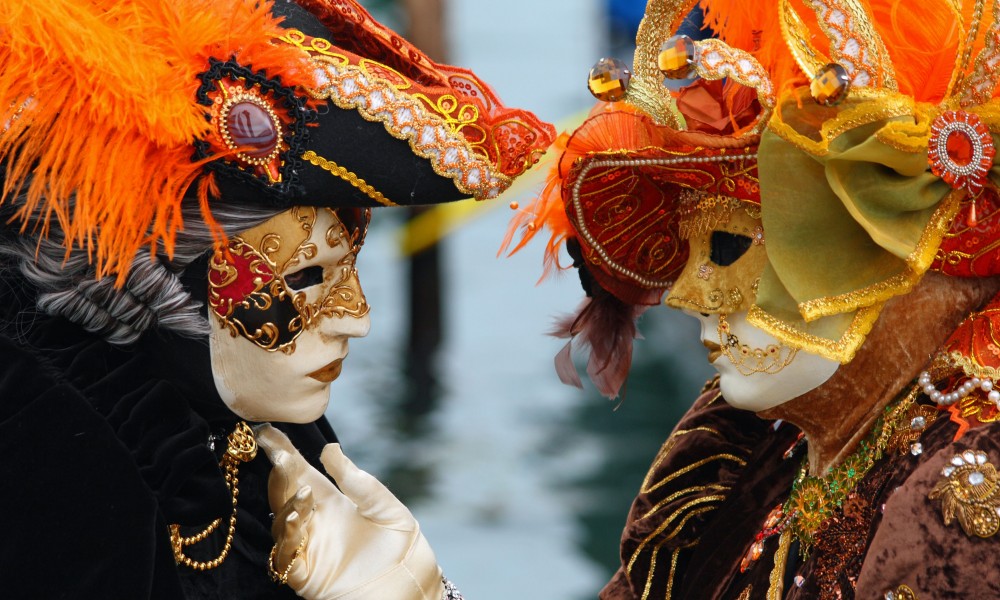
During the Venetian carnival city looks as if divided into invisible subatomic particles: each area features its own performance. Somewhere, in the museum, visitors are told about history of the traditional festival masks, in another spot city guests are plunging into the luxury of ancient customs, and theatrical performances are held across a street.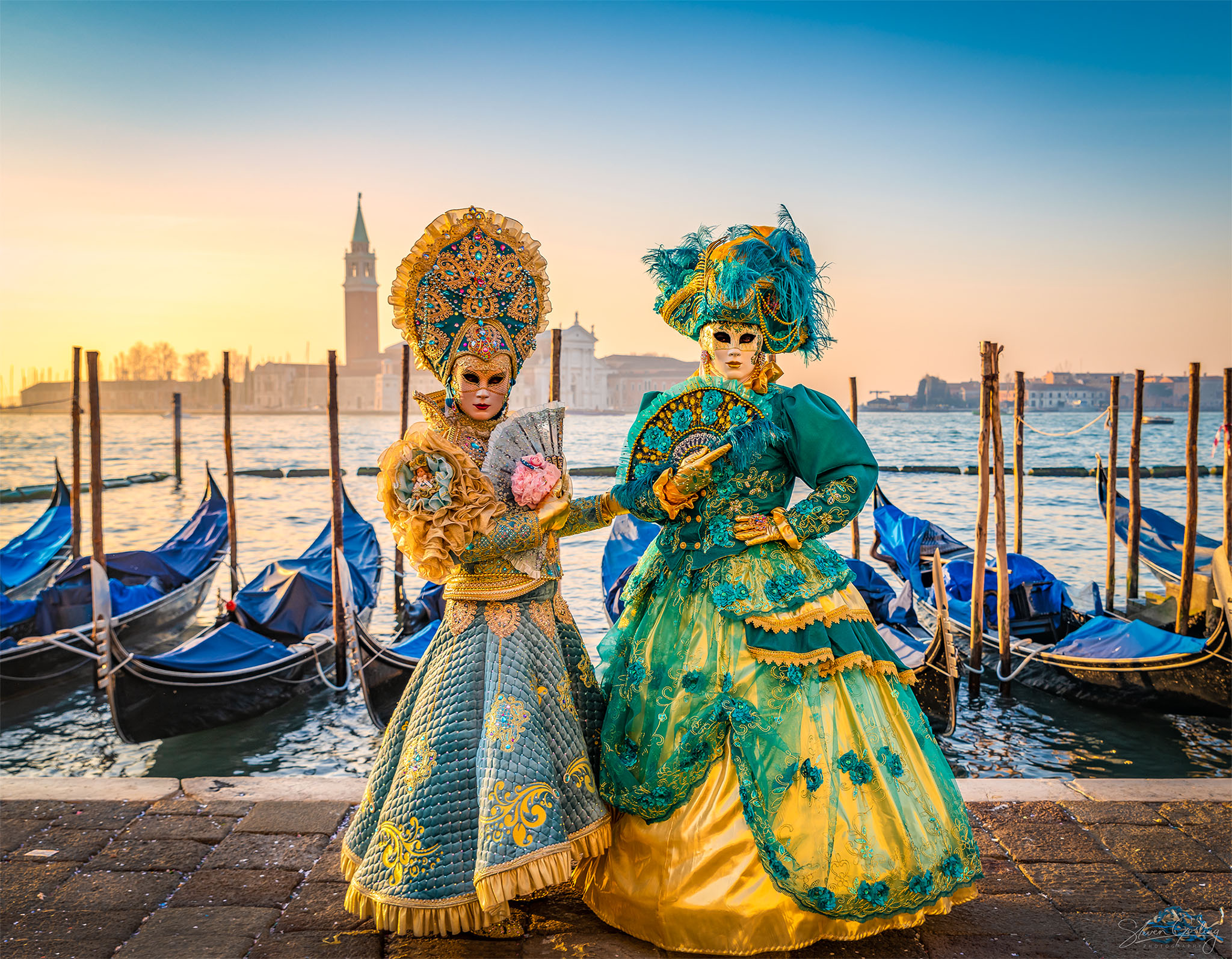 Photo fusionphotographyworkshops.co.uk
Photo fusionphotographyworkshops.co.uk
Legends of the ancient carnivals
Yellowed with age, written sources state that the Venice Carnival was first mentioned back in1094. It took nearly two centuries for the Venice authorities to approve a celebration at the official level. Carnival, enveloped in the breath of freedom, surprised not only with chic costumes, but mostly by the fact that these days commoners were equalized in rights with the nobility. They all could forget about the social gap, they afforded themselves to wear the same masks and gowns, without thinking about inequality. However, this happiness lasted for a few days only, in February prior to Lent.
However, some historians believe that the origin of the Venetian carnival should be sought much earlier, during the so-called Saturnalias. Every December in the Roman Empire was special: after getting the crops in before the winter cold, people honoured the deity Saturn. Supreme forces, as we know, do not divide people according to social grounds - the Romans learned this principle very well and therefore invited to the festive table both slaves and their masters. To avoid embarrassing situations, all the guests came in masks, and then no one could recognize who had higher social standing.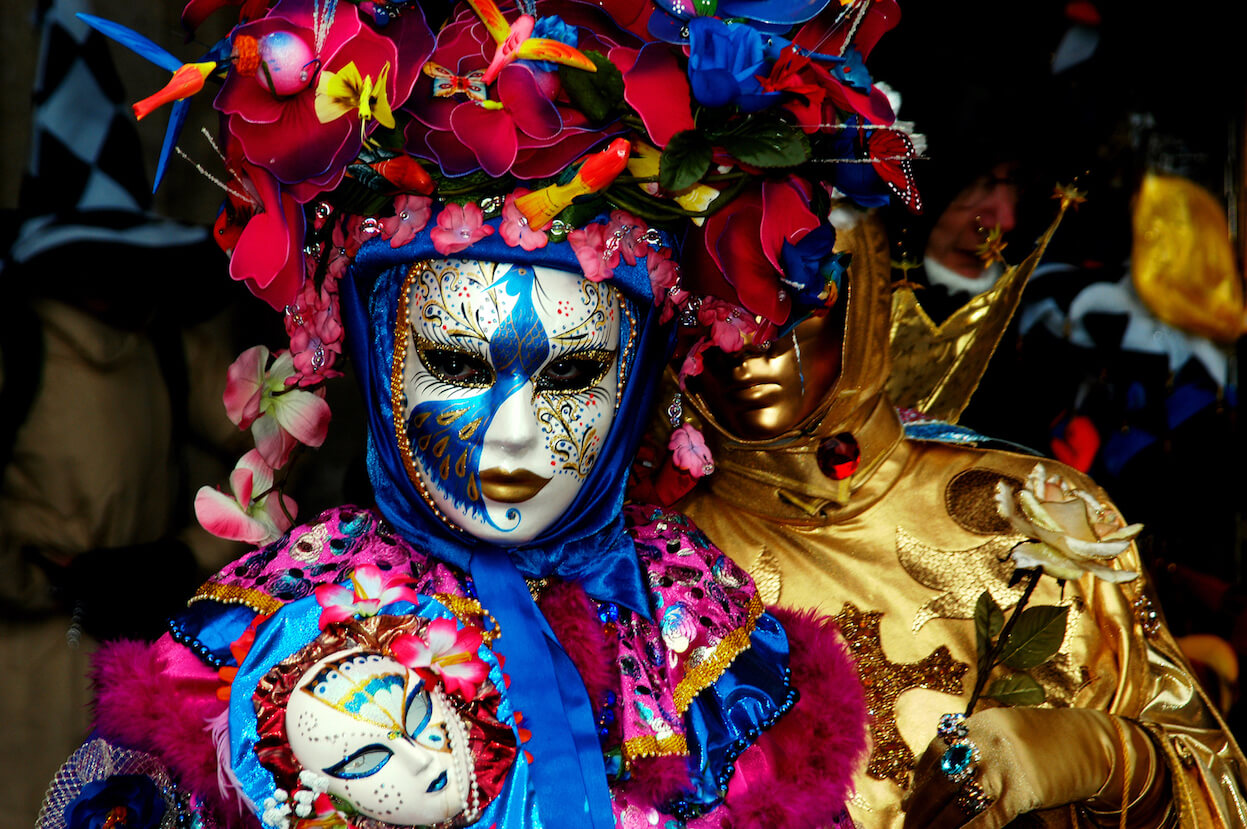 Photo veniceevents.com
Photo veniceevents.com
Religious background is evident from the word "carnival" which in Latin means "farewell to meat", of course, it reflected strict rejection of gastronomic pleasures to which faithful people resorted before Easter. There is another version of the name: rumour has it, that a mysterious "carnival" is a combination of two words - "carrus navelis", i.e. "ship ceremony". Where from did a notion of a ship come to name of the holiday? There is a story about saving girls from captivity of Istrian pirates. The legend comes to life every year in the streets of Venice during the carnival. And it tells us about the following.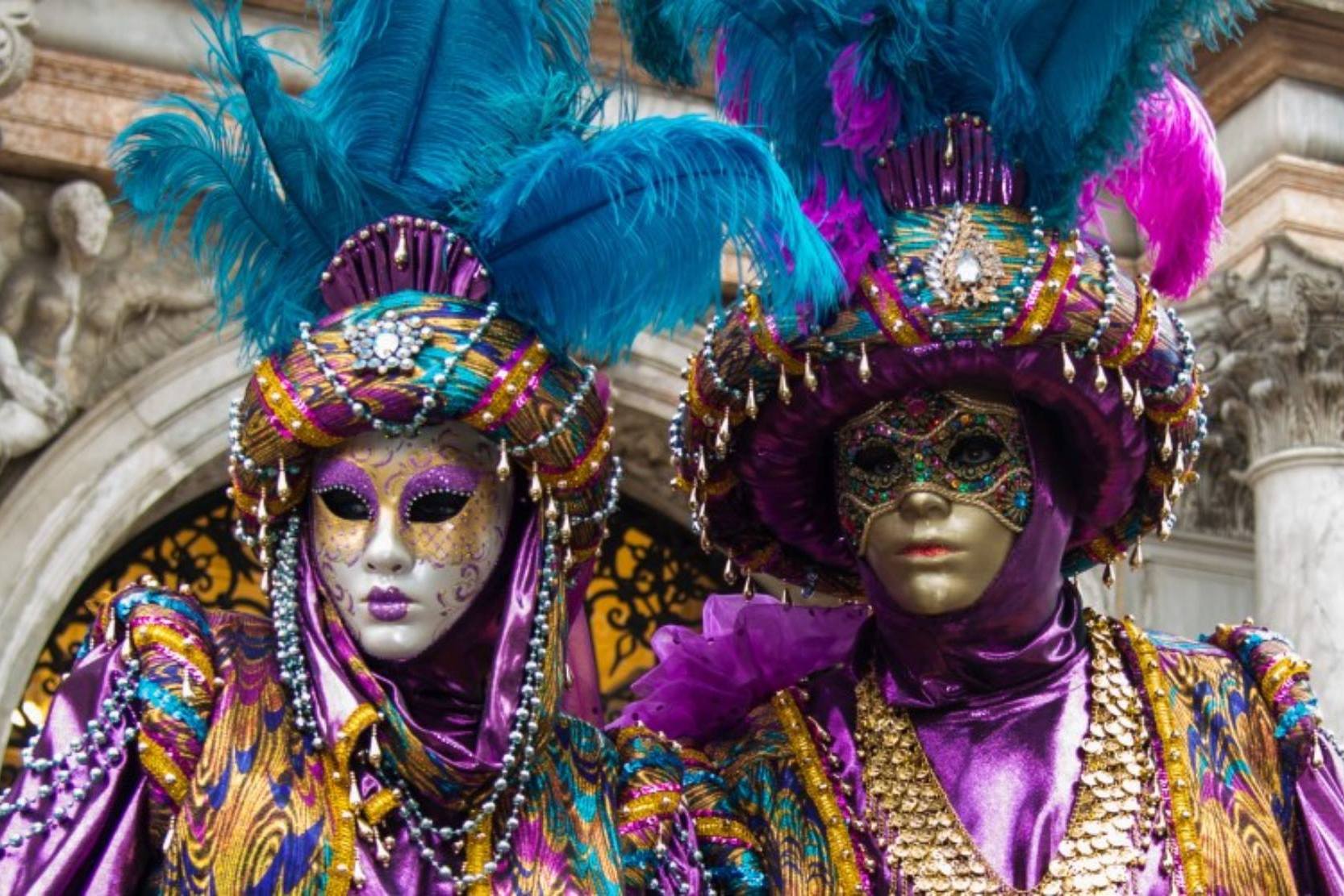 Photo isango.com
Photo isango.com
In the 9th century, the inhabitants of Venice followed the tradition of collective marriages, which were held on the 2nd of February, the day of the Purification of the Blessed Virgin Mary. In the Church of San Pietro, together with brides from wealthy families, were poor girls who had no dowries. Every wealthy family gave expensive jewellery to twelve brides without dowry, and then the girls were advised to forget their names and take as a gift the name Maria. Once, during a ceremony pirates raided at the premises and kidnapped girls - in fact, their goal was luxurious jewels donated to brides. Fortunately, the local authorities were quite responsive, and none of the kidnapped was injured. To commemorate that day when, as Venice residents believed, the Virgin Mary saved innocent brides, the festival Festa della Marie was approved, Italians have not forgotten this day till now. However, the final chord of this celebration is different from the old source - nowadays twelve beauties receive a cruise as a gift.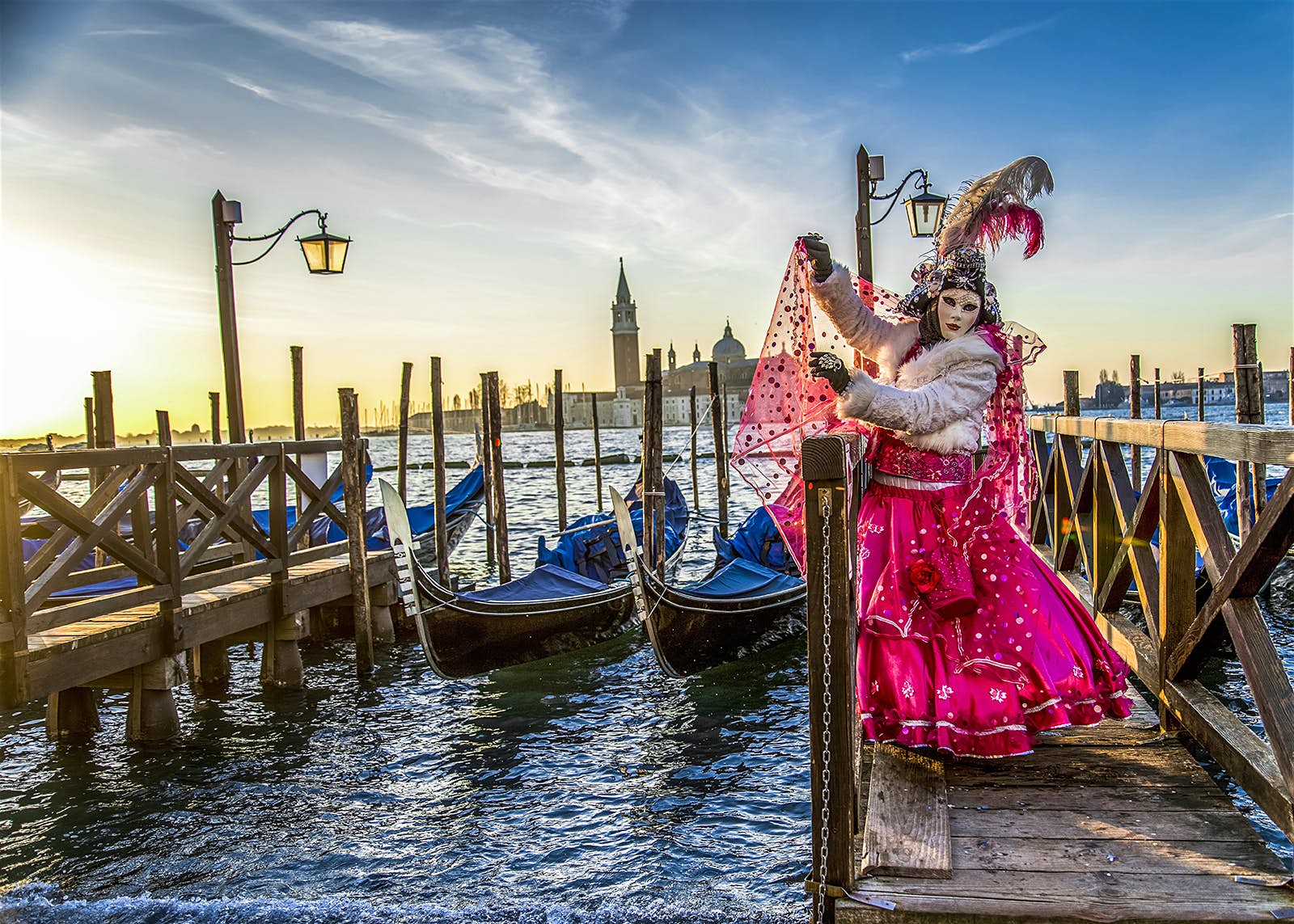 Photo lonelyplanet.com
Photo lonelyplanet.com
Stories of famous masks
It is a big temptation to dress up in costumes of comical characters during the Venetian carnival. Sometimes one wants to forget about all the problems at least for a few days, and just to try on a personality of timid Piero or flirtatious Columbine; or to choose a brown hooked-nose mask symbolizing a greedy Pantalone. And as an option, one can be reincarnated as an aggressive Captain when putting on a hawk-like dark mask with rigid facial features; or play the role of a cunning Brighella having hoisted the green mask and wearing a white coat with pants decorated with green stripes. All these masks came from the popular comedy, which means that there are no typical positive characters, and each accessory has a specific meaning. Thus, a mask with long nose is considered to be a tribute to curiosity. Aristocratic origin of a character is indicated by sole coloured costume, poor characters prefer bright combinations. And if you are close to the role of Pulcinella, do not forget about his typical walk - this comedy analogue of Russian Petrushka walks with bent back.
Photo timeout.com
Some believe that the selected role accompanies a person for the rest of the life, so it is worthy to put on a mask which has no historical background. You may like a white rhombus-shaped mask called bauta which is worn together with a black tricorn. This part of the costume was used in the old days by poorer representatives of society who wanted to equalize with the upper class during the carnival. Ironically, it is now one of the most expensive masks. If you are afraid of a sharp, a bit mortal black and white contrast inherent to the bauta mask, you can opt for an elegant volto formed in a shape of a human face. Basically, it was worn during the reign of Titian, when ladies chose this option that represented free Liberty, freedom-loving Fantasy or Salome longing for justice..jpg) Photo italybook.ru
Photo italybook.ru
Movement of epochs, immutability of traditions
Centuries followed each other and brought stubborn tradition thorough them, so centuries-old traditions remained unchanged. The 18th century was a heyday of Italian commedia dell'arte - this forerunner of pantomime was theatrical performance where actors hid their faces behind masks. Comedy was performed in the squares, on the hastily erected stage, so the first directors had to make sure that public recognized the characters. In addition, a mask does not allow to play too sophisticated artistic solutions, so the stories were quite primitive, and the characters were predictable. The typical masks for Venice were masks of a greedy merchant Pantalone, a charlatan doctor Graziano, a cunning and mischievous servant Brighella and a foolish but charming Harlequin. Eventually, colourful scenes of commedia dell'arte became an integral part of the carnival. Although one may classify this theatre genre as a primitive form of art, the actors had to work hard to create it. For instance, it was assumed that each of characters should speak his own dialect of the Italian language: Venice, Bergamo and Bologna.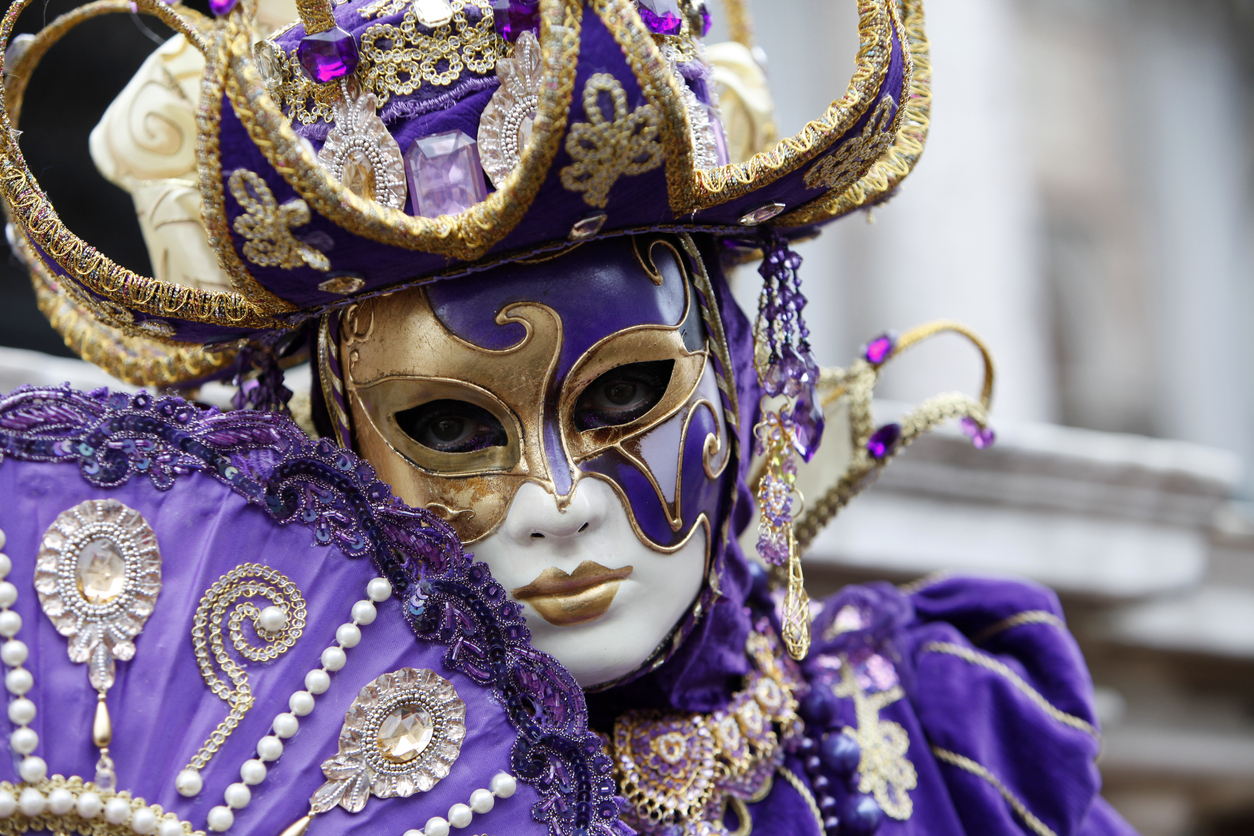 Photo orderisda.org
Photo orderisda.org
At the same time, directors were wondering how to make it clear to the public that action begins, and how to mark the end of the performance. Thus was born another tradition, which can now be seen at the time of the Venetian carnival. Attracting the attention of idle onlookers, paper logo was launched into the sky, it exploded in the air and homemade fireworks fell to the ground. This simple move was a sign: actors launched telling a real carnival story.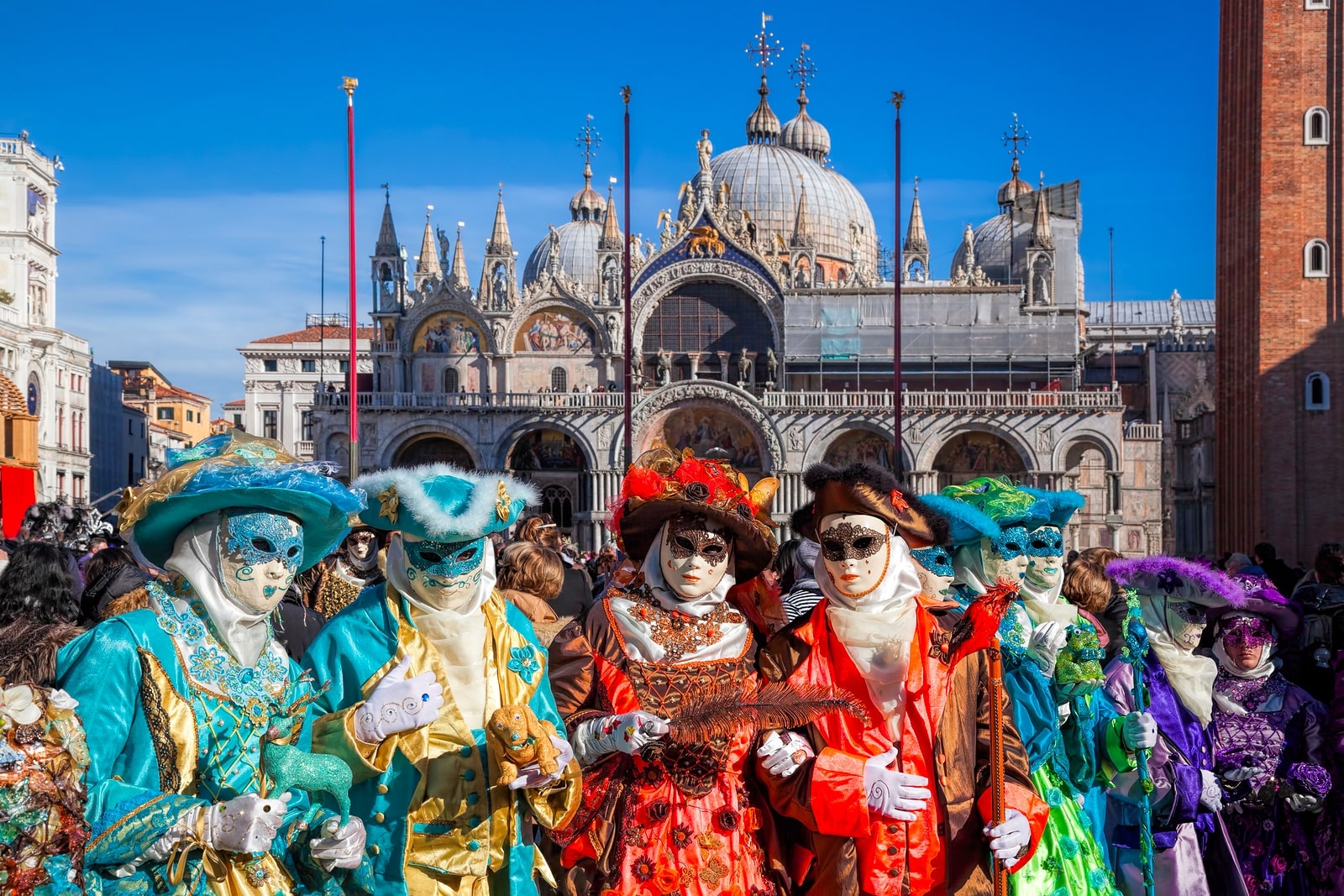 Photo veniceevents.com
Photo veniceevents.com
Another tradition, which came from antiquity, is associated with an aura of mystery surrounding the Venice Carnival. The mask was put on each participant of festive events, hiding his origin from prying eyes. However, the freedom of personal space was respected by all the visitors to the carnival: no one was allowed to talk to any person hidden behind a mask, it was prohibited to try to figure out identity, since it was violation of the ancient rituals which are ground of the festival. However, this strict rule fizzled after the final fireworks, which completed the carnival and was a silent symbol: now one can take the mask off and look around.
Cover photo en.wikipedia.org





















